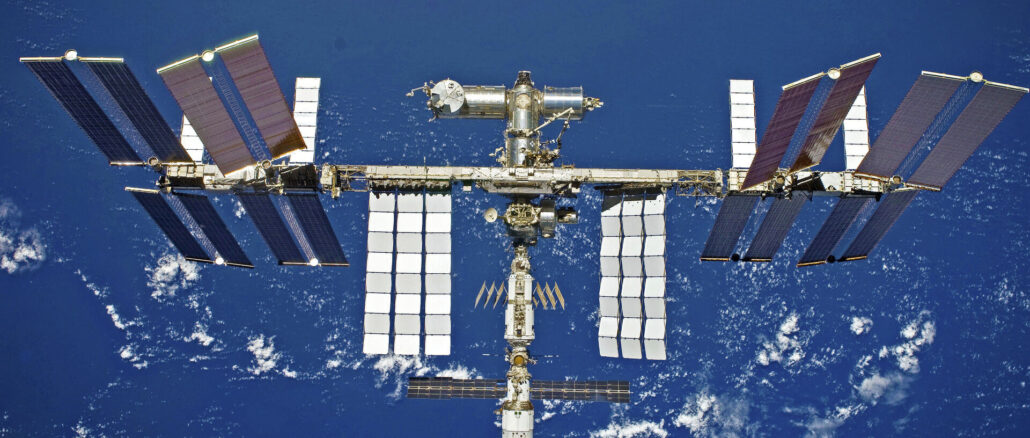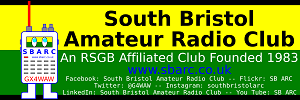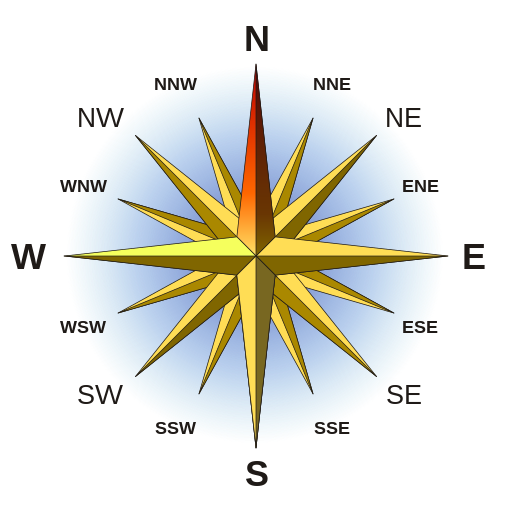
You are encouraged to share this post with your friends, acquaintances, colleagues and family by all channels available to you.
News posts, such as this, published on the SBARC website are reposted via a number of other channels including social media feeds and our Groups.io mailing lists. These external services may alter the formatting or layout of the original News Post. If you want to see this News Post in its original form please visit the SBARC website News page and follow the link or links to the story or stories of your choice.
SSTV Activity Period to Celebrate 40th Anniversary of STS-9 Mission
Original Post Details
This announcement is subject to crew duties and operational constraints on the station.
ARISS TWEETED (sorry, POSTED) on 6 December 2023 at 20:15: https://x.com/ARISS_Intl/status/1732493864844284328?s=20.
Forty years ago, Astronaut Owen Garriott W5LFL, pioneered amateur radio communication from space on his historic STS-9 flight on the Space Shuttle Columbia. Launched November 28, 1983, Owen conducted international science investigations as part of his Spacelab-1 mission. During his free time, Owen became the first ever person from space to communicate with amateur radio operators on the ground. He was also the first to be heard directly from space by the public using simple receivers and scanners.
Garriott’s mission, 40 years ago transformed astronaut communications from space forever, allowing amateur radio operators (hams) and the public to communicate with people in space. Prior to this, only a few mission controllers and the heads of state could talk to an astronaut in space. Forty years later, the human spaceflight accomplishments of the international amateur radio radio community have continued to be pioneering and impactful. Amateur radio on human spaceflight inspires the public and, most importantly, inspires, engages and educates youth encouraging them to pursue STEM careers.
Slow Scan Television (SSTV) was an early component of Amateur Radio in human spaceflight. Tony England W0ORE sent 10 images via SSTV from STS-51F. Before this SSTV was used to transmit images of the far side of the Moon from the Russian Luna 3 in 1959.
The first space television system was called Seliger-Tral-D and was used aboard Vostok. Vostok was based on an earlier videophone project which used two cameras, with persistent LI-23 iconoscope tubes. Its output was 10 frames per second at 100 lines per frame video signal.
- The Seliger system was tested during the 1960 launches of the Vostok capsule, including Sputnik 5, containing the space dogs Belka and Strelka, whose images are often mistaken for the dog Laika, and the 1961 flight of Yuri Gagarin, the first man in space on Vostok 1.
- Vostok 2 and thereafter used an improved 400-line television system referred to as Topaz.
- A second generation system (Krechet, incorporating docking views, overlay of docking data, etc.) was introduced after 1975.
A similar concept, also named SSTV, was used on the American Faith 7 in 1963, as well as on the early years of the NASA Apollo program. The Faith 7 camera transmitted one frame every two seconds, with a resolution of 320 lines.
The Apollo TV cameras used SSTV to transmit images from inside Apollo 7, Apollo 8, and Apollo 9, as well as the Apollo 11 Lunar Module television from the Moon.
- The SSTV system used in NASA’s early Apollo missions transferred 10 frames per second with a resolution of 320 frame lines in order to use less bandwidth than a normal TV transmission.
- The early SSTV systems used by NASA differ significantly from the SSTV systems currently in use by amateur radio enthusiasts today.
Operational Details
- Start: 10:15 UTC on Saturday December 16 2023
- End: 18:00 UTC on Tuesday December 19 2023
Note: Dates and times are subject to change due to ISS operational adjustments.
Table of ISS Passes
Address: Novers Park Community Association, Rear of 124 Novers Park Road, Bristol, BS4 1RN
- Latitude (degrees N-S where North is +ve): 51.425358°
- Longitude (degrees E-W where East is +ve): -2.593782°
- IARU (Maidenhead) Locator [Calculated by Spreadsheet]: IO81qk
- Elevation (metres above Ordnance Datum [AOD]): 64m
- What.Three.Words: ///Hugs.Sorry.Dime
AOD: In the UK Ordnance Datum is the mean sea level at Newlyn in Cornwall, elsewhere in the world the elevation above sea-level will be sufficiently accurate.
If you are reading this News post through Groups.io then, due to formatting limitations imposed by Groups.io, the colour banding may not show up in your post. For a full colour correctly formatted version please head over to the SBARC Website News Page and follow the “Read More” link under the headline and description.
Notes:
In the table below:
- Table Entries with a cyan background indicate passes where: 0° < Maximum Elevation ≤ 30°
- Table Entries with a yellow background indicate passes where: 30° < Maximum Elevation ≤ 60°
- Table Entries with a green background indicate passes where: 60° < Maximum Elevation ≤ 90°
- Times are UK clock time, that is GMT/UTC during the winter and BST/UTC+1:00 during the summer
- Elevation shows the degrees above the horizon. Zero degrees is the horizon and ninety degrees is directly overhead
- Azimuth represents the direction to the ISS using a traditional 16 cardinal point compass rose
| Pass No. |
Date | Acquisition of Signal “AoS” | Maximum Elevation | Loss of Signal “LoS” | Pass Duration (Min:Sec) |
Comments | ||||||
|---|---|---|---|---|---|---|---|---|---|---|---|---|
| UK Clock Time | Elevation | Azimuth or Bearing |
UK Clock Time | Elevation | Azimuth or Bearing |
UK Clock Time | Elevation | Azimuth or Bearing |
||||
| 01 | 16/12/23 | 11:31:49 | 10° | W | 11:35:09 | 68° | SSW | 11:38:29 | 10° | ESE | 06:40 | Daylight |
| 02 | 16/12/23 | 13:08:52 | 10° | W | 13:11:28 | 21° | SW | 13:14:03 | 10° | SSE | 05:11 | Daylight |
| 03 | 17/12/23 | 07:29:49 | 10° | SW | 07:32:55 | 35° | SSE | 07:36:01 | 10° | E | 06:12 | Visible |
| 04 | 17/12/23 | 09:06:05 | 10° | W | 09:09:26 | 88° | S | 09:12:48 | 10° | E | 06:43 | Daylight |
| 05 | 17/12/23 | 10:42:50 | 10° | W | 10:46:11 | 83° | S | 10:49:32 | 10° | ESE | 06:42 | Daylight |
| 06 | 17/12/23 | 12:19:40 | 10° | W | 12:22:39 | 30° | SSW | 12:25:36 | 10° | SSE | 05:56 | Daylight |
| 07 | 18/12/23 | 06:41:13 | 10° | SSW | 06:44:01 | 25° | SSE | 06:46:50 | 10° | E | 05:37 | Visible |
| 08 | 18/12/23 | 08:17:05 | 10° | WSW | 08:20:26 | 76° | SSE | 08:23:46 | 10° | E | 06:41 | Daylight |
| 09 | 18/12/23 | 09:53:48 | 10° | W | 09:57:10 | 88° | N | 10:00:31 | 10° | E | 06:43 | Daylight |
| 10 | 18/12/23 | 11:30:33 | 10° | W | 11:33:44 | 41° | SSW | 11:36:54 | 10° | SE | 06:21 | Daylight |
| 11 | 18/12/23 | 13:09:11 | 10° | SW | 13:09:45 | 10° | SW | 13:10:19 | 10° | SW | 01:08 | Daylight |
| 12 | 19/12/23 | 05:52:51 | 10° | S | 05:55:09 | 18° | SE | 05:57:28 | 10° | E | 04:37 | Visible |
| 13 | 19/12/23 | 07:28:05 | 10° | WSW | 07:31:24 | 61° | SSE | 07:34:43 | 10° | E | 06:38 | Visible |
| 14 | 19/12/23 | 09:04:43 | 10° | W | 09:08:04 | 84° | N | 09:11:26 | 10° | E | 06:43 | Daylight |
| 15 | 19/12/23 | 10:41:27 | 10° | W | 10:44:45 | 56° | SSW | 10:48:01 | 10° | ESE | 06:34 | Daylight |
| 16 | 19/12/23 | 12:18:50 | 10° | WSW | 12:20:56 | 16° | SW | 12:23:02 | 10° | S | 04:12 | Daylight |
| 17 | No Pass Data | |||||||||||
| 18 | No Pass Data | |||||||||||
| 19 | No Pass Data | |||||||||||
| 20 | No Pass Data | |||||||||||
| 21 | No Pass Data | |||||||||||
| 22 | No Pass Data | |||||||||||
| 23 | No Pass Data | |||||||||||
| 24 | No Pass Data | |||||||||||
| 25 | No Pass Data | |||||||||||
| 26 | No Pass Data | |||||||||||
| 27 | No Pass Data | |||||||||||
| 28 | No Pass Data | |||||||||||
| 29 | No Pass Data | |||||||||||
| 30 | No Pass Data | |||||||||||
| 31 | No Pass Data | |||||||||||
| 32 | No Pass Data | |||||||||||
| 33 | No Pass Data | |||||||||||
| 34 | No Pass Data | |||||||||||
| 35 | No Pass Data | |||||||||||
| 36 | No Pass Data | |||||||||||
| 37 | No Pass Data | |||||||||||
| 38 | No Pass Data | |||||||||||
| 39 | No Pass Data | |||||||||||
| 40 | No Pass Data | |||||||||||
| 41 | No Pass Data | |||||||||||
| 42 | No Pass Data | |||||||||||
| 43 | No Pass Data | |||||||||||
| 44 | No Pass Data | |||||||||||
| 45 | No Pass Data | |||||||||||
| 46 | No Pass Data | |||||||||||
| 47 | No Pass Data | |||||||||||
| 48 | No Pass Data | |||||||||||
| 49 | No Pass Data | |||||||||||
| 50 | No Pass Data | |||||||||||
Details of how to obtain your own table of pass predictions using either AMSAT or Heavens Above are provided at the end of this post.
Background and Reception of Images
Historically, images are downlinked at 145.800MHz FM +/- 3kHz for Doppler shift and the expected SSTV mode of operation is PD 120. Many FM rigs can be switched been wide and narrow deviation FM filters, for best results you should select the filter for wider deviation FM. Handhelds all seem to have a single wide filter fitted as standard.
There is an official European Space Agency (ESA) video about receiving SSTV from the ISS using the web SDR at Goonhilly for those who don’t have a capability to receive on 145.800MHz. You can see the video here: ESA ISS SSTV Video. For those interested in doing their own reception and decoding either live or after the event using recordings made during the passes for subsequent decoding the AMSAT website has a good primer that will serve as a good reference for those more experienced too.
We encourage you to have a try at receiving and decoding these images, you do not need specialist equipment, Kevin 2E0AWX was successful with just a handheld, set-top whip and Robot36 on a ‘phone within 2 weeks of passing his Foundation exam, and Greg 2W1BUF collected a number of good decoded images using a SDR dongle or a Yaesu FT2900 with MMSSTV. So don’t be put off; give it a try, any images you receive can be included on the Club website if you send them to us; contact details at the bottom of the webpage.
SSTV Programs are available for all platforms so no matter what you use there’s probably something to decode the image:
- Linux including Raspbian on the Raspberry Pi – QSSTV can be found at users.telenet.be/on4qz/qsstv/index.html if you want the absolute latest version. However Debian based distros such as Ubuntu, Mint and others almost certainly will have QSSTV in their repositories as will other mainstream distros and the repository version is usually more than adequate.
- Windows – MMSSTV can be found at hamsoft.ca/pages/mmsstv.php.
- Mac OSX – MultiScan can be found at www.qsl.net/kd6cji.
- Android – Robot36 can be installed from the PlayStore and includes both PD180 and PD120. Not sure what minimum version of Android it wants but it runs without issue on Android 6 which is reasonably long in the tooth.
- iOS – Black Cat Systems sstv-slow-scan-tv.
For those who like real time information the Android App AmSatDroid Free is one of a number of live satellite trackers available for Android. Similar apps are available for iOS, a simple example is ISS Spotter.
How to Obtain Your own Pass Predictions
If you want to run your own location specific pass predictions try using:
- The AMSAT On line satellite pass predictions
- The Heavens Above website
The AMSAT site will require either:
- Method 1
- Your 6 character IARU (Maidenhead) locator square (e.g. IO81qk); and
- Your elevation in metres (e.g. 64).
- Method 2
- The absolute (without +ve or -ve sign) value of your Latitude in decimal degrees and selecting North where the original value is positive (greater than 0) or selecting South where the original value is negative (less than 0) (e.g. 51.425358 North);
- The absolute (without +ve or -ve sign) value of your Longitude in decimal degrees and selecting East where the original value is positive (greater than 0) or selecting West where the original value is negative (less than 0) (e.g. 2.593782 West);
- Your elevation in metres (e.g. 64).
The Heavens Above site is more flexible and will accept any of:
- Method 1
- Your address including postcode (e.g. Novers Park Community Association, Rear of 124 Novers Park Road, Bristol, BS4 1RN); and
- Your elevation in metres (e.g. 64).
- Method 2
- Your What.Three.Words location descriptor (e.g. ///hugs.sorry.dime); and
- Your elevation in metres (e.g. 64).
- Method 3
- Your Latitude in decimal degrees where +ve is north of the equator and -ve is south of the equator (e.g. 51.425358);
- Your Longitude in decimal degrees where +ve is east of the Greenwich Meridian and -ve is west of the Greenwich Meridian (e.g. -2.593782); and
- Your elevation in metres (e.g. 64).
When using Heavens Above don’t forget to check that you have the correct timezone (e.g. (GMT +0:00) United Kingdom/Ireland).
Heavens Above understands British Summer Time and corrects accordingly.




